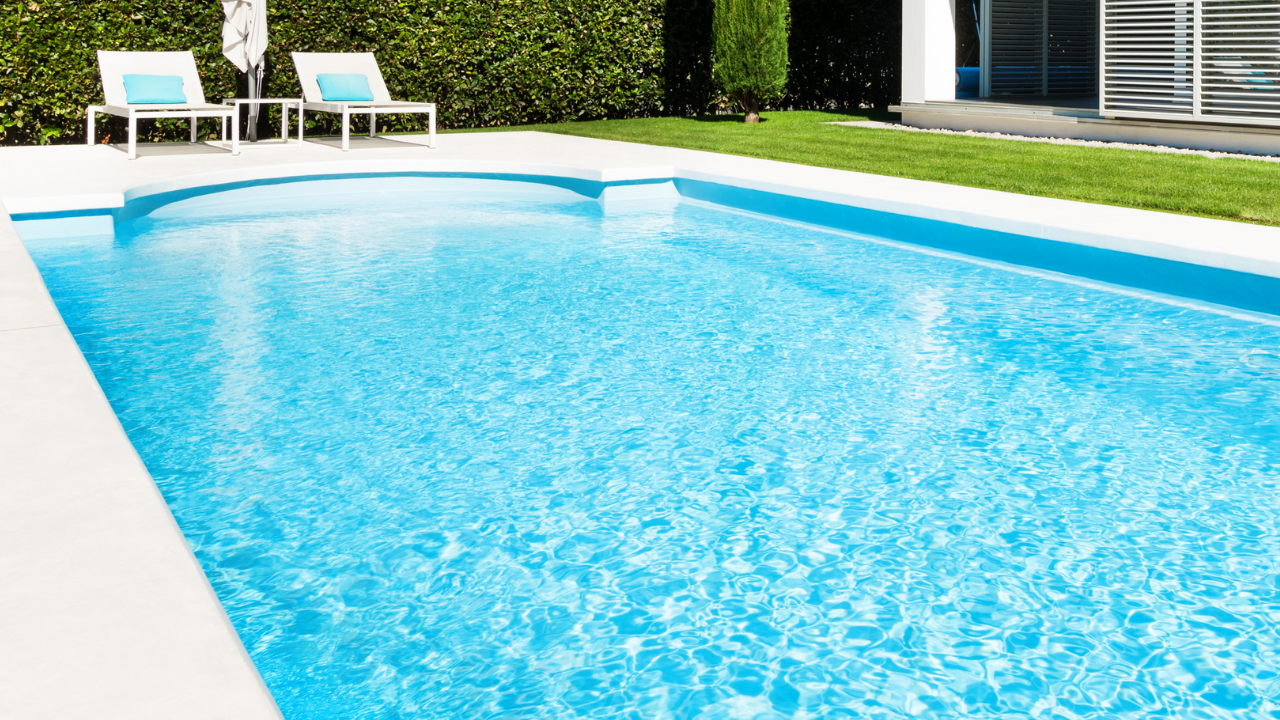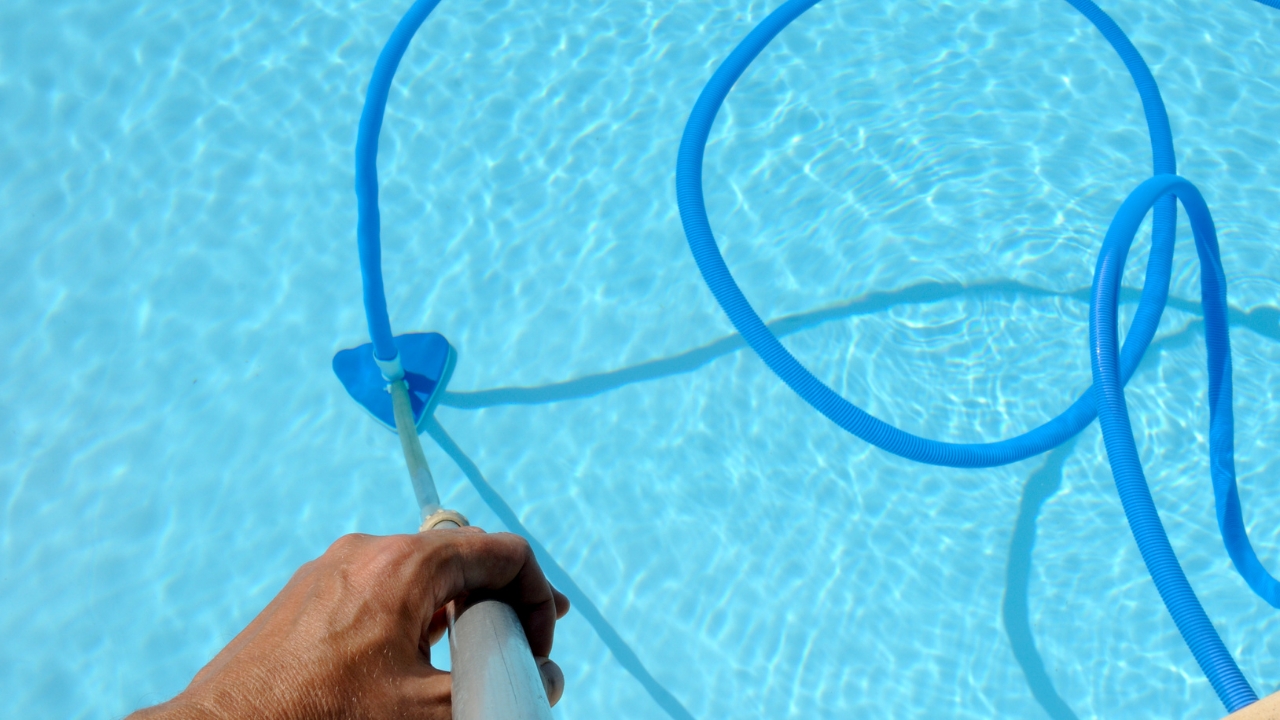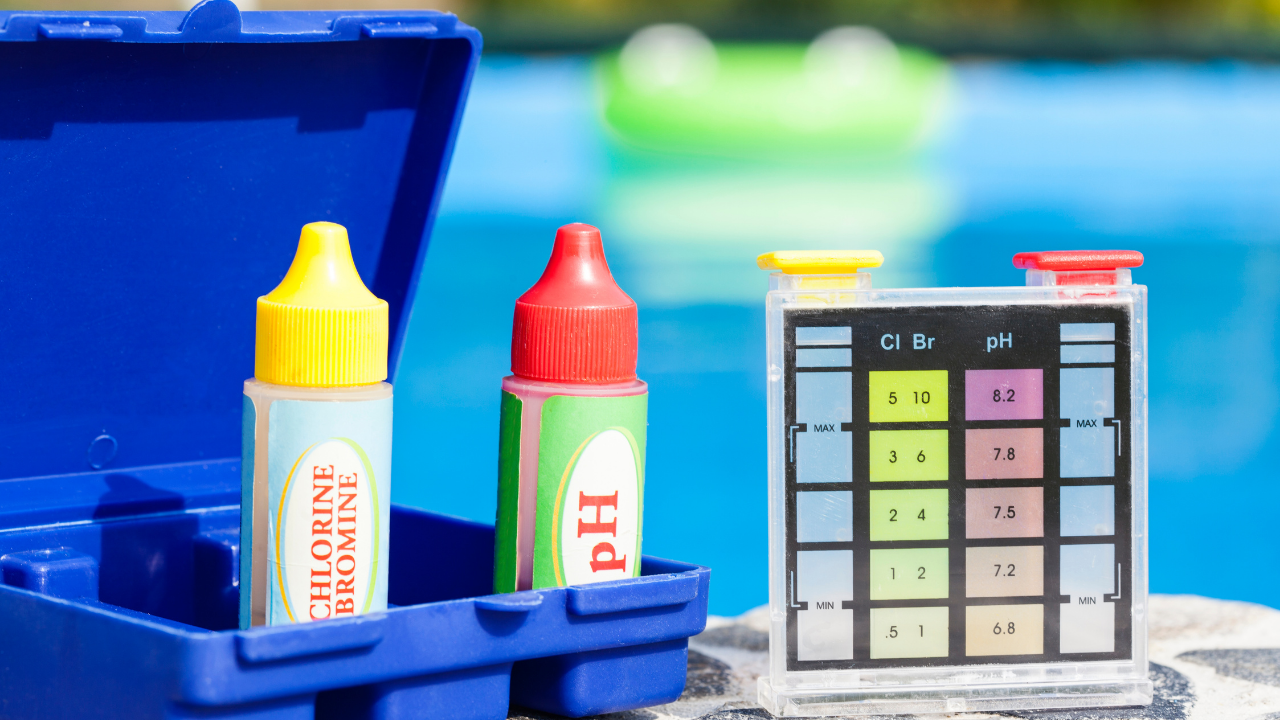How To Take Care of a Pool

The Three C's of Swimming Pool Care
If you want to make your swimming pool clean and healthy, proper maintenance is a must. In this guide, we will outline a few simple steps that should be part of your weekly routine. This way, you can maintain a clear swimming pool no problem and get back to relaxing! When it comes to swimming pool care, there are only 3 things to make sure of. 1) Circulation, 2) Cleaning, 3) Chemistry.

Circulation
Swimming Pool Care and maintenance starts with pool circulation because if your pool water isn’t moving, your pump isn’t pumping, or your filter isn’t filtering, you’re going to be fighting a huge battle to keep your pool clean and clear. This is because stagnant water is a breeding ground for algae growth.
Here are a few parts that make up your pool’s circulatory system. The pool skimmer, the pool pump, the pool filter, (Sand Filter or Cartridge Filter) and the jets (Returns). If any one of these parts are impeded, your pool water quality will suffer greatly. Here’s a short explanation of how your pool works to keep your pool water clean and circulating properly:
- Pump sucks water from pool through a skimmer and or main drain and or side suction.
- Water travels to the pool pump then out into your pool filter.
- Filter cleans out particles that are making your water dirty.
- Flows out the pool filter and thru a heater. (if you have a salt system, the salt cell is the last thing the filtered water goes thru before going back to the pool.)
- Pool water is pushed back into pool thru pool jets/returns.
Your pool pump is the main part of your swimming pool. The pump draws water thru the filtration system, where it’s stripped of dirt, debris, and other impurities. From there, the clean pool water goes back to the swimming pool.
Run the Pool Pump
Duration: 12-24 hours per day
The more you run your pool filtration system, the cleaner your pool water will be and the less time you’ll have to spend scrubbing algae or balancing your pool water. If running your pool filter system for 24 hours isn't an option, try and run your pool filter 12 hours per day. If you are in a hotter climate, you should run your pool pump a little larger per day. Always have your pool pump running during the day as the nights are normally cooler.
Backwash or Clean the Pool Filter(s)
When pool filter gauge reads about 5-10 psi higher than normal operating pressure it's time to  clean your cartridge filter(s) or
clean your cartridge filter(s) or  backwash the pool sand filter.
backwash the pool sand filter.
Clean the Skimmer Basket
Frequency: 1-2 times per week
Cleaning the pool skimmer and pump baskets regularly is important to the overall maintenance of your swimming pool. Clogged or full baskets make your pump work harder to try to cycle the water. This can decrease the life and stress the pool pump. We suggest cleaning your pool skimmer once or twice a week depending on how often you use it and what time of year it is. In the spring you have pollen and in the fall you have leaves falling. Try and keep an extra eye during those times. A pool skimmer filter saver works very well in the spring.
To clean the pool skimmer basket, turn off your pool pump and empty the removable basket that's in the skimmer, then replace. (add a filter saver)
Once in a while, check your pool pump basket for any debris. Clean as needed..
Angle the Pool Jets
Make sure your swimming pool jets are pointing in the right directions so your water cycles in a circle. This will rotate the water and make it easier for your pool skimmer to pull in any debris. If you don't have a main drain in the deep end, angle the "deep end" pool jet downward so that the bottom of the pool gets circulation as well. (Robot cleaner works well for this) If there are any areas of the swimming pool that struggle to get proper water flow, most commonly the around the steps, ladders, and corners of your swimming pool, you can angle the pool jets towards these areas also. Over time you will find the best angles for your jets at the right time of season and weather situations.

Pool Cleaning
Frequency: Vacuum once a week. Brush and Skim once per day or as needed.
Manual maintenance cleaning is a normal part of owning a swimming pool unless you own a robot cleaner. This is a great investment and you'll never have to manually vacuum your pool again. Unless you want to?
Brush
Brushing the walls with a pool brush prevents algae, staining, and scaling, especially around “dead zones” such as steps, ladders, and corners of your swimming pool.
Skim
Skimming the surface of the water with a removes large and small debris. This debris can fall to the bottom of your swimming pool where it can leave stains. Another reason to buy a robot cleaner.
Vacuum
Vacuuming your swimming pool is another essential part of removing dirt and other debris that can reduce circulation and damage your pool. You can use a vacuum hose, and pole attached to your pool skimmer or side suction for vacuuming (not all pools have this)
Click here for  5 Ways to Vacuum a Swimming Pool
5 Ways to Vacuum a Swimming Pool

Chemistry
Frequency: Test 1-2 times per week or as needed.
Pool Water Chemistry is another big factor in keeping your pool water crystal clear and clean. When your pool water is properly balanced, you’re less likely to struggle with cloudy water, green water, or bacteria. That’s why having all the water test kits needed for your swimming pool is essential for your pool maintenance success.  Basic Test Kit,
Basic Test Kit,  Salt Water Tester,
Salt Water Tester,  Phosphate Tester
Phosphate Tester
Test Your Pool Water & Balance Your Chemicals
Test you pool water weekly. To keep things easier for yourself, buy a test kit that will tell you if you need to add pool chemicals to maintain your water balance.
Here are the essential ranges that your water should be:
- pH of around 7.2-7.5. This is important because pH levels that are too high or too low can lead to a variety of pool maintenance issues, from equipment corrosion to increased green algae growth.
- Calcium hardness: 200 – 400 ppm in a swimming pool. When calcium hardness levels are too low, you risk damage to your pool’s plaster finish or vinyl liner. But if your pool’s calcium hardness is too high, you’ll be scraping away hard to remove calcium deposits.
- Alkalinity: 120 to 150 ppm. If it’s below this range, your pool’s pH can be affected, and your pool’s surfaces are more prone to stains. If it’s on the higher side, your water can become cloudy.
- Chlorine: Available in sticks, granules, and tablets, chlorine breaks down harmful bacteria and sanitizes your pool water. You’ll want to keep the chlorine levels stable to ensure that your swimming pool stays clean and clear.
- Phosphates: If your swimming pool water is green and cloudy, it's possible that the phosphate levels in your pool are too high. Having too many phosphates in your swimming pool can make algae growth likely and makes it more difficult to maintain proper pool water chemistry.
Shocking the Pool
Frequency: AS NEEDED - Test your water first.
The more you use your swimming pool, the more often you might have to shock your pool.
You may also want to shock your pool after periods of heavy use or weathering in these cases:
Always test first !
- After an intense storm
- After an unexpected contamination
- After an algae breakout
"My biggest motivation? Just to keep challenging myself. I see life almost like one long University education that I never had - everyday I'm learning something new."
- RICHARD BRANSON
| |




